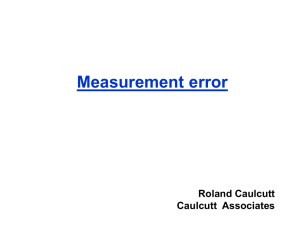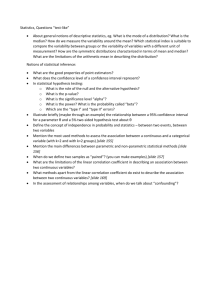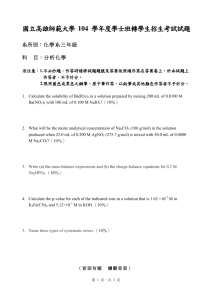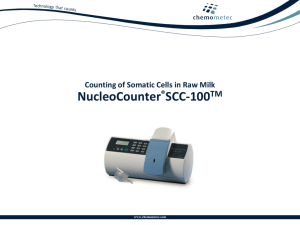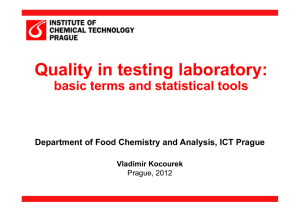QIBA Draft Claims_fMRI_Template (JV)
advertisement
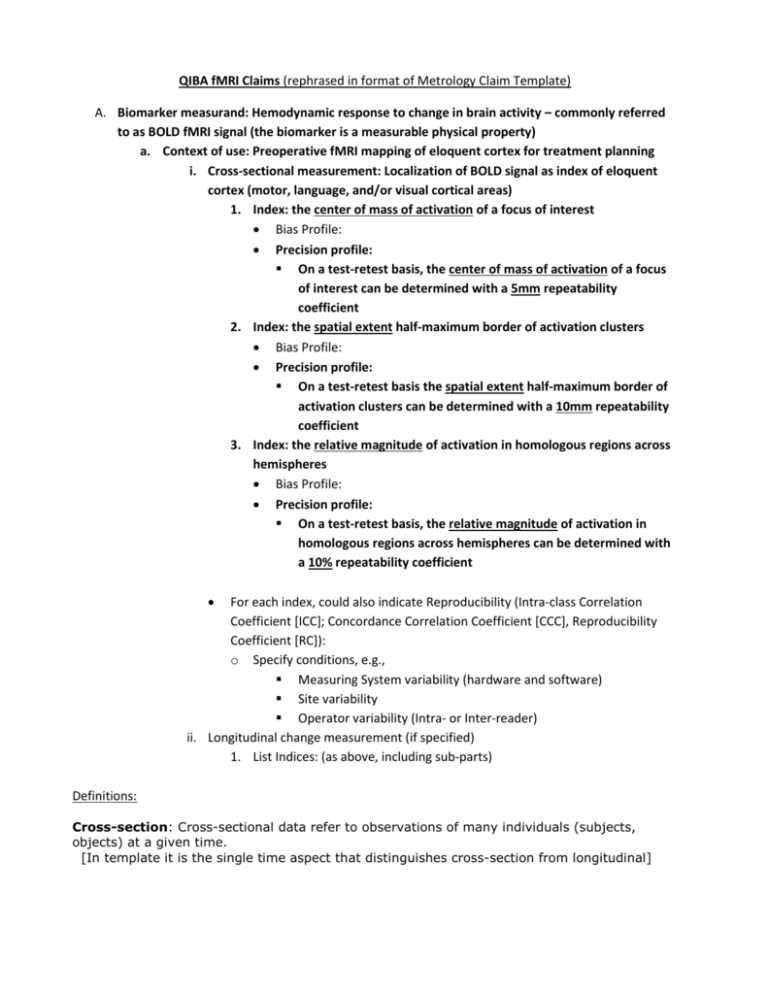
QIBA fMRI Claims (rephrased in format of Metrology Claim Template) A. Biomarker measurand: Hemodynamic response to change in brain activity – commonly referred to as BOLD fMRI signal (the biomarker is a measurable physical property) a. Context of use: Preoperative fMRI mapping of eloquent cortex for treatment planning i. Cross-sectional measurement: Localization of BOLD signal as index of eloquent cortex (motor, language, and/or visual cortical areas) 1. Index: the center of mass of activation of a focus of interest Bias Profile: Precision profile: On a test-retest basis, the center of mass of activation of a focus of interest can be determined with a 5mm repeatability coefficient 2. Index: the spatial extent half-maximum border of activation clusters Bias Profile: Precision profile: On a test-retest basis the spatial extent half-maximum border of activation clusters can be determined with a 10mm repeatability coefficient 3. Index: the relative magnitude of activation in homologous regions across hemispheres Bias Profile: Precision profile: On a test-retest basis, the relative magnitude of activation in homologous regions across hemispheres can be determined with a 10% repeatability coefficient For each index, could also indicate Reproducibility (Intra-class Correlation Coefficient [ICC]; Concordance Correlation Coefficient [CCC], Reproducibility Coefficient [RC]): o Specify conditions, e.g., Measuring System variability (hardware and software) Site variability Operator variability (Intra- or Inter-reader) ii. Longitudinal change measurement (if specified) 1. List Indices: (as above, including sub-parts) Definitions: Cross-section: Cross-sectional data refer to observations of many individuals (subjects, objects) at a given time. [In template it is the single time aspect that distinguishes cross-section from longitudinal] Bias: VIM, 2.18; also called measurement bias]: estimate of a systematic measurement error. Bias describes the difference between the average (expected value) of measurements made on the same object and its true value. In particular, for a measurement laboratory, bias is the difference (generally unknown) between a laboratory's average value (over time [an infinite number of measurements]) for a test item and the average that would be achieved by the reference laboratory if it undertook the same measurements on the same test item (http://www.itl.nist.gov/div898/handbook/mpc/section1/mpc113.htm). If the true value is unknown, then the bias cannot be obtained. Precision [VIM, 2.15; also called measurement precision]: closeness of agreement between indications or measured quantity values obtained by replicate measurements on the same or similar objects under specified conditions. As noted in the VIM, precision is usually expressed numerically by measures of imprecision under the specified conditions of measurement, for example, by standard deviation or some multiple of standard deviation, variance, or coefficient of variation. Smaller variability is associated with higher precision (lower standard deviation, i.e., the values are tighter). The number of significant digits in the measurement obtained should reflect the precision. The ‘specified conditions’ can be, for example, repeatability conditions of measurement or reproducibility conditions of measurement. Repeatability: Variability associated with making repeated measurements under similar conditions Assumption is that the true value of the biomarker will not have changed between measurements. Example: take subject out, put subject back in, and then measure again Reproducibility: Variability associated with making repeated measurements where conditions may have changed Example: measuring same subject on different instruments Repeatability coefficient: 2.77 x StDev (or 1.96 x sqrt(2 x Var)) This is a metrology index, expressed in the same units as the measurand Intra-class correlation coefficient: reproducibility index based on the proportion of total variance between measurements

